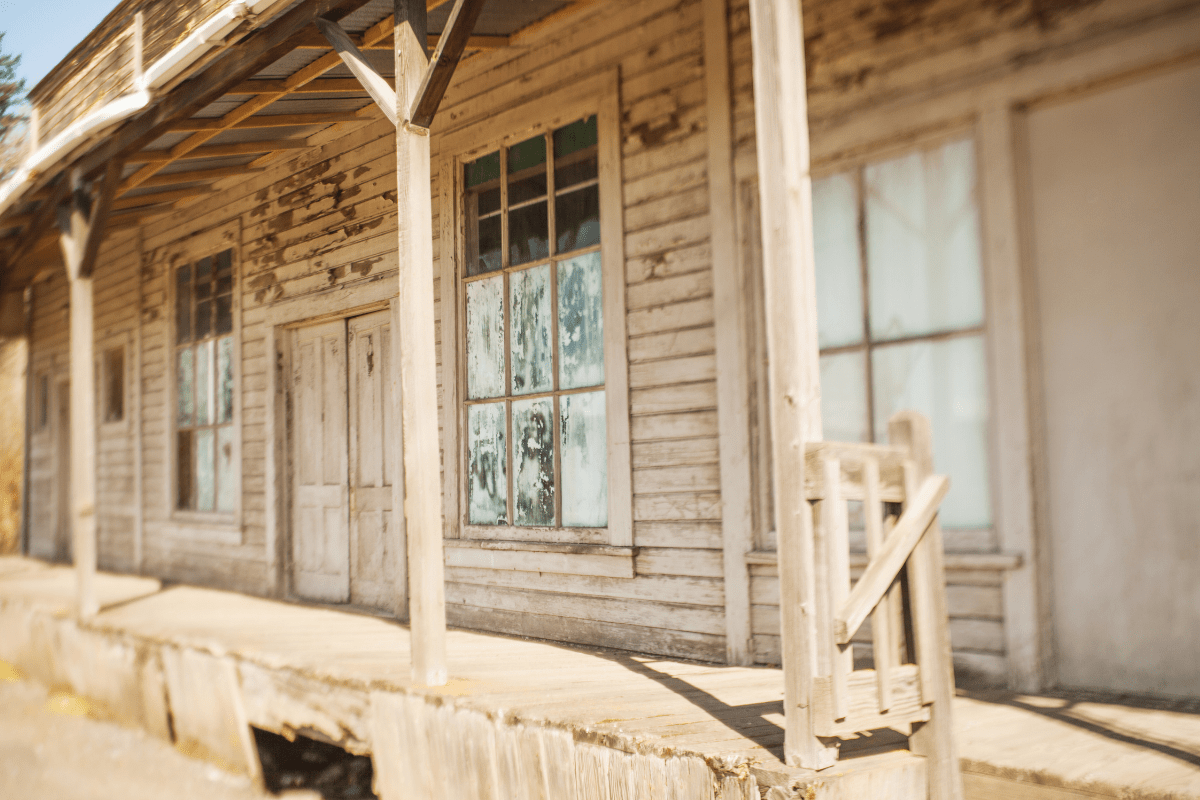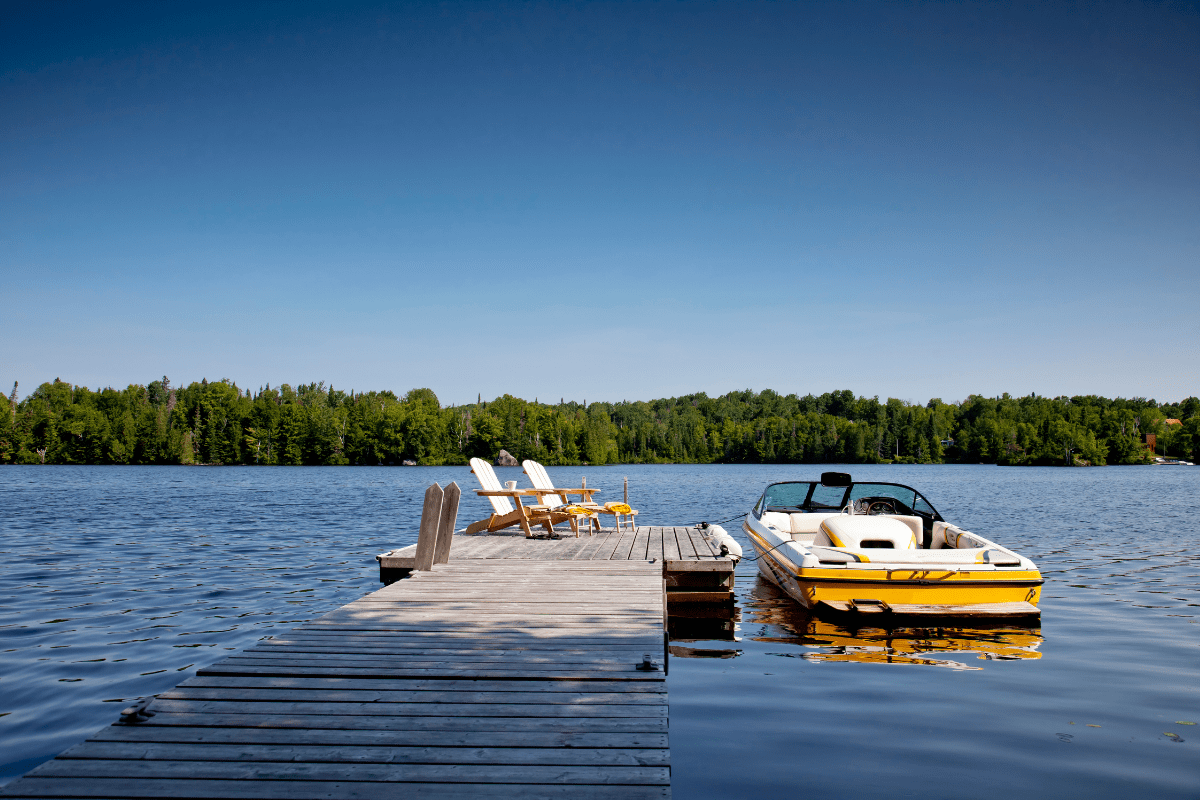The morning sun casts long shadows across the concrete ruins of Antioch's potash plants, where 5,000 people once lived and worked during World War I. Today, fewer than 25 residents remain in this Sheridan County settlement that perfectly captures Nebraska's ghost town legacy. These are communities built on agricultural dreams, railroad ambitions, and wartime necessity that ultimately lost to economic forces beyond anyone's control.
The peculiar math of prairie abandonment
Nebraska's ghost towns tell a fundamentally different story than their flashier Western cousins. While Colorado boasts 99 ghost towns and Kansas somehow accumulated 308 (seriously, Kansas?), Nebraska's approximately 31 documented abandoned settlements emerged from distinctly agricultural tragedies. No gold rush busts or silver mine collapses here. Just the slow, inevitable math of farm consolidation and railroad economics.
The numbers paint a sobering picture. According to Nebraska Legislature research, 74% of Nebraska counties lost population in the past decade. The state hemorrhages 4,000 to 6,000 residents annually to other states, while five core counties now hold 62% of the total population. It's like watching a slow-motion evacuation where nobody's quite sure who turned off the lights first.
Ruben Acosta from the State Historic Preservation Office puts it more diplomatically. These sites "provide us clues on not only the economic and material aspects of prairie life, but also give insight to how people planned for the future and saw their relationship between their community and the larger world." Translation: these folks had dreams, and studying their ruins helps us understand how spectacularly wrong things can go despite the best intentions.
How to build a ghost town in three easy steps
Railroad towns: here today, gone tomorrow
The railroad expansion of 1870 to 1890 created Nebraska's first wave of future ghost towns. The Chicago, Burlington & Quincy and other lines needed settlements every few miles to service steam engines and handle grain shipments. It was urban planning at its most optimistic and shortsighted.
Take Dobytown, established in 1859 near Fort Kearny. This wasn't your grandmother's prairie settlement. With 12 to 15 adobe buildings, it served soldiers and westward travelers with the holy trinity of frontier commerce: gambling, liquor, and overpriced supplies. The town thrived on vice and necessity until 1869, when the Union Pacific Railroad's completion made overland trails about as useful as a screen door on a submarine. Fort Kearny closed in 1871, and Dobytown vanished so completely that today only a historical marker at the intersection of Highway 50A and 27th Road proves it ever existed.
The real estate motto "location, location, location" apparently didn't reach DeSoto in Washington County. Founded in 1854 as a steamboat landing, the town briefly rivaled Omaha with 700 residents and three banks that printed their own currency. Then came the Panic of 1857, which collapsed all three banks faster than you can say "subprime mortgage crisis." The 1859 Colorado gold rush drew residents west, and when the railroad chose Blair for its river crossing instead of DeSoto… well, that was basically the nineteenth-century equivalent of getting unfriended by infrastructure. Today, only farmland and a historical marker remain.
The great potash delusion of 1917
World War I created Nebraska's most spectacular boom-bust cycle, and Antioch won the lottery nobody wants to win. When German potash imports ceased in 1917, somebody noticed Nebraska's alkaline lakes could produce this crucial ingredient for fertilizer and munitions. Antioch transformed from a village with one schoolhouse into a city of over 5,000 people between 1917 and 1918.
Five major factories extracted potash from the lakes, with prices soaring from $10 to $150 per ton. Workers flooded in, houses went up overnight, and everyone acted like the party would never end. Spoiler alert: it ended. European imports resumed in 1921, and the last plant closed within months. The concrete ruins visible from Highway 2 now serve as monuments to wartime opportunism, earning a spot on the National Register of Historic Places since 1979. Because nothing says "historic preservation" quite like industrial ruins that remind us of our collective poor judgment.
When rivers attack
River towns faced their own unique flavor of doom. Niobrara, founded in 1857 along the Missouri River, actually had everything going for it. The town grew to 860 residents with three general stores, two newspapers, and a $10,000 three-story hotel that was then the state's largest and costliest. They were living the dream.
Then came March 28, 1881. An ice gorge broke at midnight, flooding the town with three to six feet of water in thirty minutes. After three floods that April, citizens made an extraordinary decision that would make modern city planners weep: they moved the entire town. Building by building, using house jacks, winches, oxen, and mules, at a cost of $40,000 (millions in today's dollars).
But wait, there's more! Niobrara moved AGAIN in the 1970s when Gavins Point Dam raised groundwater levels. It's Nebraska's only town relocated twice, which is either incredibly resilient or incredibly stubborn, depending on your perspective.
The ghost town grand tour
St. Deroin: the family-friendly phantom
If you're going to start anywhere, make it St. Deroin in Indian Cave State Park. This Nemaha County site offers the most accessible ghost town experience, complete with actual amenities like parking and restrooms. Revolutionary concepts, I know.
The restored 1944 brick schoolhouse underwent renovation in 1978 and now hosts interpretive programs from May through October. There's a reconstructed general store and trading post, plus the original cemetery where founder Joseph Deroin allegedly lies buried atop his horse. Yes, you read that correctly. The man loved his horse so much he wanted to spend eternity in the saddle. Park staff will happily share ghost stories about the supposedly haunted schoolhouse, though honestly, if you were a ghost stuck in rural Nebraska, wouldn't you haunt something too?
Living history demonstrations on summer weekends bring the 1850s river town back to life, which is ironic since it's been dead longer than it was ever alive. You'll need to pay the state park entrance fee, but consider it your contribution to keeping Nebraska's ghosts properly maintained.
Brocksburg: where Instagram dreams come true
For the photographers among us (and let's be honest, who isn't these days?), Brocksburg in Keya Paha County is your golden ticket. Located along Highway 137's Outlaw Trail Scenic Byway, this ghost town operated from 1899 to 1957, when the post office finally admitted defeat.
Several structures remain in surprisingly good condition, protected by mature trees that create a canopy perfect for those moody, atmospheric shots. There's even a century-old tornado shelter from the original homestead, because pioneer life wasn't terrifying enough without underground tornado hideouts.
Here's the dark history nobody mentions in the tourism brochures: three residents were knocked from the town bridge by an ice gorge in the 1920s and drowned in the river below. So maybe skip the bridge selfies.
Minersville: enter at your own risk
South of Nebraska City lies Minersville, and I cannot stress this enough: it's on private property and genuinely dangerous. Founded in the 1850s as Bennett's Ferry, the town boomed after coal discoveries in 1864, supporting over 1,000 residents at its peak. But frequent mine cave-ins and poor coal quality drove everyone away by the early 1900s.
Today, deteriorating structures and unstable mine shafts make this a terrible idea for casual exploration. The cemetery has "seemingly disappeared" according to local historians, which is not creepy at all. The area's association with "Seven Sisters Road" urban legends adds an extra layer of nope. If you absolutely must visit, get landowner permission and maybe update your will first.
Belmont: engineering meets isolation
Eleven miles southeast of Crawford in Dawes County, Belmont features Nebraska's only railroad tunnel, an engineering marvel from 1888-1889. During World War I, they actually guarded this tunnel against sabotage, because apparently German spies were super interested in rural Nebraska infrastructure.
The tunnel entrance still bears "1920" carved above it from post-war repairs. Several buildings remain, including the school and churches, though the last store burned in 1949. There's no cell coverage out here, and the nearest services are in Crawford. It's the kind of place where your phone's GPS just gives up and suggests you reconsider your life choices.
Planning your expedition into nowhere
The optimal ghost town season runs from April through October, though each season offers its own special blend of discomfort and beauty. Fall provides comfortable temperatures and dramatic colors against weathered wood and stone. Spring brings wildflowers but also mud that will absolutely eat your rental car. Summer can exceed 100°F with sudden thunderstorms that appear from nowhere like meteorological jump scares. Winter? Forget it. The roads become impassable, and you'll spend more time stuck than exploring.
The classic ghost towns circuit
Here's a two-day, 600-mile itinerary for the ambitious:
Day 1:
- Start at St. Deroin (2 hours from Omaha)
- Continue to Dobytown's historical marker near Kearney
- End at Antioch's potash ruins, 15 miles east of Alliance
Day 2:
- Visit Brocksburg via Highway 137
- Return east while questioning your life choices
- Stop for gas frequently (seriously, fill up whenever possible)
Essential gear for not dying
Before you channel your inner pioneer, pack smart:
- One gallon of water per person
- First aid kit with snake bite instructions
- Sturdy boots (not your trendy sneakers)
- Emergency communication device
- Downloaded offline maps
- Snacks (lots of snacks)
- Tetanus shot records
- Common sense (often forgotten)
Prairie rattlesnakes remain active from April through October, because nature wants you to know you're not welcome. Deteriorating structures harbor black widow spiders, rusty nails, lead paint, and asbestos… basically a buffet of things that can hurt you. The Nebraska State Historical Society strongly advises against entering abandoned buildings, and honestly, they're not being dramatic.
The slow death of rural Nebraska
Let's talk numbers, because nothing says "fun article about ghost towns" like demographic statistics. According to legislative research, 69 of Nebraska's 93 counties lost population between 2010 and 2020. That's not a trend; it's an evacuation.
Farm consolidation accelerated everything. Between 2017 and 2022, farm numbers dropped from 46,000 to 44,000 while average size increased to 989 acres. Bigger farms need fewer towns. It's simple, depressing math.
Railroad abandonment delivered the final blow to many communities. Since 1963, Nebraska lost 249 miles of rail line. The Chicago & North Western's "Cowboy Line" closure alone eliminated dozens of grain shipping points. No trains meant no way to ship grain, which meant no reason to exist. These towns didn't fade away… they just stopped making sense.
The future looks empty
Nebraska's over-65 population will grow 29.7% by 2030, while the under-20 group increases by a whopping 1%. Rural schools keep closing, forcing hour-long bus rides that prompt families to move closer to town. Then those towns lose critical mass and begin their own death spirals.
Monowi represents the logical endpoint of this trend. With a population of one, Elsie Eiler serves as mayor, treasurer, and sole resident. She runs the town tavern and pays taxes to herself, which is either the ultimate small government success story or a dystopian nightmare, depending on your politics.
Preserving what's already gone
The Nebraska State Historical Society, founded in 1878, leads preservation efforts with limited resources but genuine dedication. They evaluate roughly 420 archaeological and historical sites every two years. The Highway Archaeology Program has discovered 200 previously unrecorded sites, usually right before bulldozers arrive.
The Nebraska State Historical Society Foundation has awarded over $250,000 in grants since 2020 to 225 museums and historical societies. It sounds impressive until you realize that's about $1,100 per organization, which might buy some nice display cases or half a roof repair.
Some sites receive protection within state parks. St. Deroin's schoolhouse got restored, Antioch's ruins made the National Register, and historical markers dot the landscape like participation trophies for failed communities. The recent dissolution of the Nebraska Archaeological Society in December 2024 represents another blow to preservation efforts, because apparently even the organizations dedicated to studying dead things are dying.
Your ghost town photography guide
If you're going to explore abandoned places, at least get good photos out of it. Wide-angle lenses capture Antioch's industrial ruins against those impossibly huge Nebraska skies. Telephoto lenses work better for Brocksburg's architectural details, assuming the trees cooperate.
Golden hour remains undefeated for dramatic lighting, but harsh midday sun creates fantastic shadows in the concrete ruins. Bring a polarizing filter for sunny days and a sturdy tripod for everything else. Check current FAA drone regulations if you're that person, and remember that state parks might prohibit aerial photography entirely.
Most importantly, you can photograph from public roads without permission. Once you step onto private property, you're trespassing, and rural Nebraska property owners don't mess around. They have guns, dogs, and a healthy suspicion of city folks with expensive cameras.
The truth about Nebraska's ghosts
These ghost towns aren't really about ghosts. They're about the space between ambition and reality, between what we plan and what actually happens. Every abandoned building represents someone's dream of prosperity, every empty main street once buzzed with hope.
Nebraska's ghost towns won't be revived. They serve as outdoor museums, photography destinations, and reminders that not every story gets a happy ending. The prairie reclaims them slowly but inevitably, grass growing through floorboards, wind whistling through broken windows, time erasing what economics abandoned.
Visit them while you can. Take pictures, respect the property lines, and maybe spend a moment thinking about the people who once called these places home. They weren't so different from us, really. They just had the misfortune of betting their futures on the wrong patch of prairie at the wrong moment in history.
And honestly? Given current rural population trends, we're still creating ghost towns. We just don't know which ones yet.





